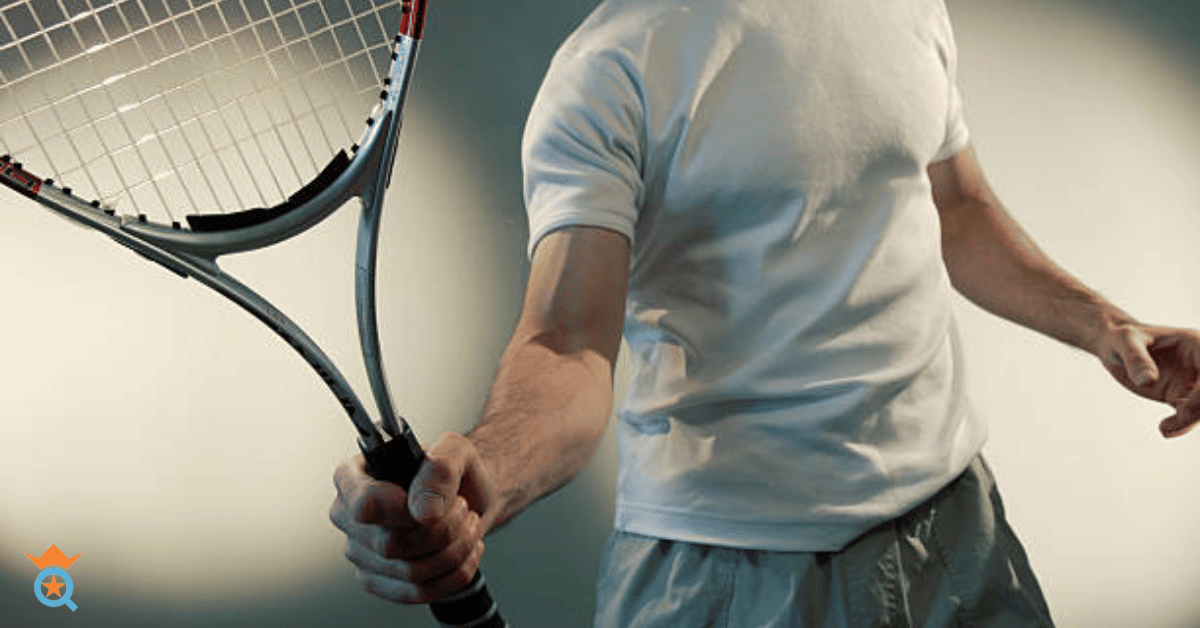Surely you've asked yourself this - "Can tennis elbow cause bicep pain?" Or perhaps you've felt that nagging pain between the bicep and forearm and wondered if it's tennis elbow or something else. Let's tackle these bicep pain mysteries today, shall we?

The Uninvited Gym Guest: Bicep Tendonitis
If you're a gym buff, you're likely no stranger to bicep tendonitis elbow. You know, that unwelcome guest that shows up when you've pushed those bicep curls just a bit too hard.
It's that swelling and inflammation of the biceps tendon, scientifically termed distal biceps tendonitis. So, what's the 411 on this condition?
Decoding Bicep Tendonitis at the Elbow
Picture this: your biceps muscle is chilling at the front of your upper arm. As it moseys over the elbow, it turns into a strong tendon that hooks onto your radius bone.
Every time you flex your muscles doing bicep curls, working a screwdriver, or doing any repetitive motions, your bicep muscle and tendon are putting in the work.
But here's the thing: overload this tendon, and you've got yourself a case of distal biceps tendonitis. That's when you'll feel pain, inflammation, and possibly a sharp pain at the attachment point to the elbow.

Bicep Tendonitis vs. Tennis Elbow: Spotting the Difference
Telling apart distal biceps tendonitis from tennis elbow can be like distinguishing twins. You see, these two conditions affect different tendons around your elbow joint, so it might take a thorough examination to determine the root cause of your elbow pain.
Typically, the tennis elbow brings pain at the outer tip of the elbow, whereas lower biceps tendonitis pain is more central.
Don't worry, though; tools like ultrasound or magnetic resonance imaging can clear up this confusion, getting you on track to the right diagnosis and treatment.

The Fear Factor: Could You Rupture Your Distal Biceps Tendon?
The risk of biceps tendon tear at the elbow is low but real. You could be casually picking up a heavy barbell at the gym, and bam! You feel a pop or crack, followed by severe pain and weakness.
Not fun, right? Such ruptures can lead to dramatic changes in the biceps muscle shape (think 'Popeye’s biceps'), followed by bruising and swelling a few days later.
In some cases, a biceps tendon might only partially rupture, which might resemble lower biceps tendonitis. Distinguishing a bicep tendon tear from tendonitis is crucial since the treatment differs quite a bit.
The Game Plan for Treating Distal Bicep Tendonitis
Now, for the good news! Most cases of lower bicep tendonitis respond well to simple treatments. Think of modifying your gym exercises or starting with lighter weights and progressively increasing to strengthen the biceps muscle.
But in complex cases, where these conservative treatments don't work, there are other options like injections to reduce tendon swelling and stimulate healing.

Stuck with Persistent Bicep Tendonitis Elbow? Here's What to Do
If exercise modifications don't offer relief, you might need to try different treatments. Injections like 'needle tenotomy' or platelet-rich plasma (PRP) can be considered.
But beware of cortisone. Although it's a potent anti-inflammatory, it carries risks of weakening the tendon and leading to rupture.
Handling a Partial Tear Biceps Tendon: The Right Approach
Full-thickness tears of the biceps tendon can sap your power and usually need surgery. Partial biceps tendon tears, though, are trickier to navigate.
In some cases, partial tears might need to be repaired, while others can be managed similarly to tendonitis.

Final Thoughts
So, while distal bicep tendonitis is a common culprit of elbow pain for gym-goers, remember to listen to your body. If you're experiencing persistent discomfort in your biceps or pain in the lower bicep above the elbow, don't ignore it.
Regular exercise, attentiveness to your body's signals, and early intervention can help keep you in top form. Remember, you're in control of your body and your health!
Frequently Asked Questions (FAQs)
Can tennis elbow cause bicep and shoulder pain?
Absolutely, tennis elbow, or lateral epicondylitis, can sometimes lead to bicep and shoulder pain. This is because the tendons and muscles in your forearm (where tennis elbow occurs) are interconnected with your bicep and shoulder. As a result, the pain can radiate upwards, particularly if the condition is left untreated or aggravated.
Can the elbow cause biceps pain?
Yes, various elbow conditions, including tennis elbow and biceps tendon injuries, can lead to biceps pain. Overuse or strain of the elbow joint can inflame the biceps tendon, causing discomfort in your bicep muscle.
Can tennis elbow cause pain in the upper arm?
While tennis elbow typically results in pain around the outer elbow, it can sometimes extend into the upper arm. This happens because the muscles and tendons affected by tennis elbow stretch from your forearm into your upper arm, allowing the pain to potentially radiate along this path.








